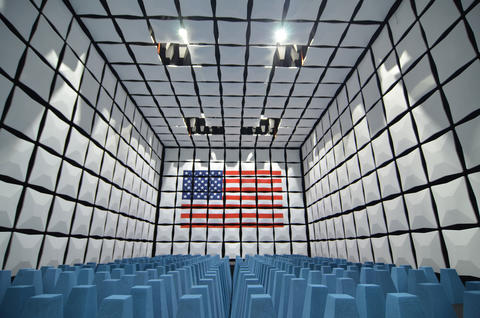
NIST’s state-of-the-art communication anechoic chamber.
GAITHERSBURG, Md. — The U.S. Department of Commerce’s National Institute of Standards and Technology (NIST) has joined the U.S. National Science Foundation (NSF), the Department of Defense Office of the Under Secretary of Defense for Research and Engineering and industry partners to spur innovation in next-generation communications systems.
The Resilient and Intelligent Next-Generation Systems (RINGS) program brings together federal agency and industry partners to accelerate research on wireless and mobile communication networks and associated computing systems and large-scale services. The program will seek to advance the underlying technologies to guarantee worldwide availability, security and reliability of next-generation (NextG) systems.
“With its long history of public-private partnerships, NIST has learned that bringing together the right expertise leads to real innovation that can solve pressing national challenges,” said James Olthoff, who is performing the non-exclusive functions and duties of the under secretary of commerce for standards and technology and director, National Institute of Standards and Technology. “We’re excited to be a part of this effort with NSF, DOD and industry to help the U.S. lead the way on ensuring we have NextG systems that can adapt to and recover from interruptions, no matter their cause.”
The RINGS partners will invest $40 million to support collaborative research teams for approximately 40 awards, each up to $1 million and up to three years in duration, subject to the availability of funds and the quality of proposals received. Proposals will be accepted through July 29, 2021.
NIST will participate in the program through its Communications Technology Laboratory (CTL), which promotes the development and deployment of advanced communications technologies.
“The Communications Technology Laboratory knows the importance of investing in the ecosystem of innovation, and we are excited to partner with NSF and the rest of the RINGS team to provide grantees access to our state-of-the-art testbeds,” said Marla Dowell, director of NIST’s Communications Technology Laboratory. “Our testbeds offer a unique end-to-end, next-generation communications testing environment to advance the next generation of communications technology.”
In addition to its testbeds and facilities, NIST offers expertise honed over decades of theoretical and experimental work in antennas and wireless communication systems, propagation, materials science and electronics measurement and testing.
Through the RINGS program, NIST will further leverage its existing partnerships with industry, federal agencies and the research community to accelerate the work of the NextG Channel Model Alliance, a group consisting of 180 participants representing over 80 companies and organizations worldwide. The alliance works to advance breakthrough propagation measurement, calibration and channel modeling approaches and technologies, and its outputs and measurement data have led to new standards and products and have accelerated the deployment of next-generation networks.
NIST promotes U.S. innovation and industrial competitiveness by advancing measurement science, standards and technology in ways that enhance economic security and improve our quality of life. To learn more about NIST, visit NIST.gov.

